Disclosure: This article contains affiliate links. We may earn a commission from purchases at no extra cost to you, which helps our travel content.
The first time I glimpsed the Citadelle Laferrière emerging from the morning mist, I felt the same rush of adrenaline that normally only comes during a difficult rescue operation. Perched atop Bonnet à l'Evêque mountain at 3,000 feet above sea level, this massive fortress isn't just an architectural wonder—it's a testament to human resilience and determination. Built between 1805 and 1820 by newly-liberated Haitians under the direction of Henri Christophe to defend against potential French re-colonization, the Citadelle stands as a powerful symbol of the world's first successful slave revolution. As someone with mixed indigenous heritage, I'm drawn to places where cultural preservation and historical significance intersect with natural beauty. Haiti offers this rare combination in abundance, though it remains tragically overlooked on most travelers' Caribbean itineraries. After five visits to this remarkable country, I'm convinced the journey to the Citadelle Laferrière near Cap-Haïtien might be one of the most rewarding historical adventures in the Western Hemisphere—if you're prepared for its challenges.
Getting to Cap-Haïtien: The Journey Begins
Most international travelers arrive in Haiti through Port-au-Prince, but reaching Cap-Haïtien requires additional planning. After my first chaotic visit, I've refined my approach to this northern journey.
From Port-au-Prince, you have three main options: domestic flights on Sunrise Airways (approximately 30 minutes), private drivers (5-6 hours), or local tap-taps (shared transportation) for the adventurous and Creole-speaking. Given Haiti's sometimes unpredictable road conditions and security situations, I strongly recommend either flying or arranging a trusted driver through your accommodation.
My most recent trip involved flying into Cap-Haïtien International Airport directly from Miami—a game-changer that saved time and reduced logistical complications. The small airport processes travelers efficiently, though be prepared for minimal amenities.
Once in Cap-Haïtien, I suggest spending at least two nights at either Hôtel Mont Joli or Habitation Jouissant. Both offer spectacular views of the bay, reliable security, and staff who can arrange transportation to the Citadelle. After a particularly grueling shift in the ER back in Philly, there's nothing quite like sitting on Mont Joli's terrace with a cold Prestige beer, watching fishing boats return as the sun sets over the Caribbean.
For navigating the city and surrounding areas, a good travel daypack is essential. Mine carries water bottles, first aid supplies (old habits die hard), snacks, and a light rain jacket—all necessities for Haitian adventures.
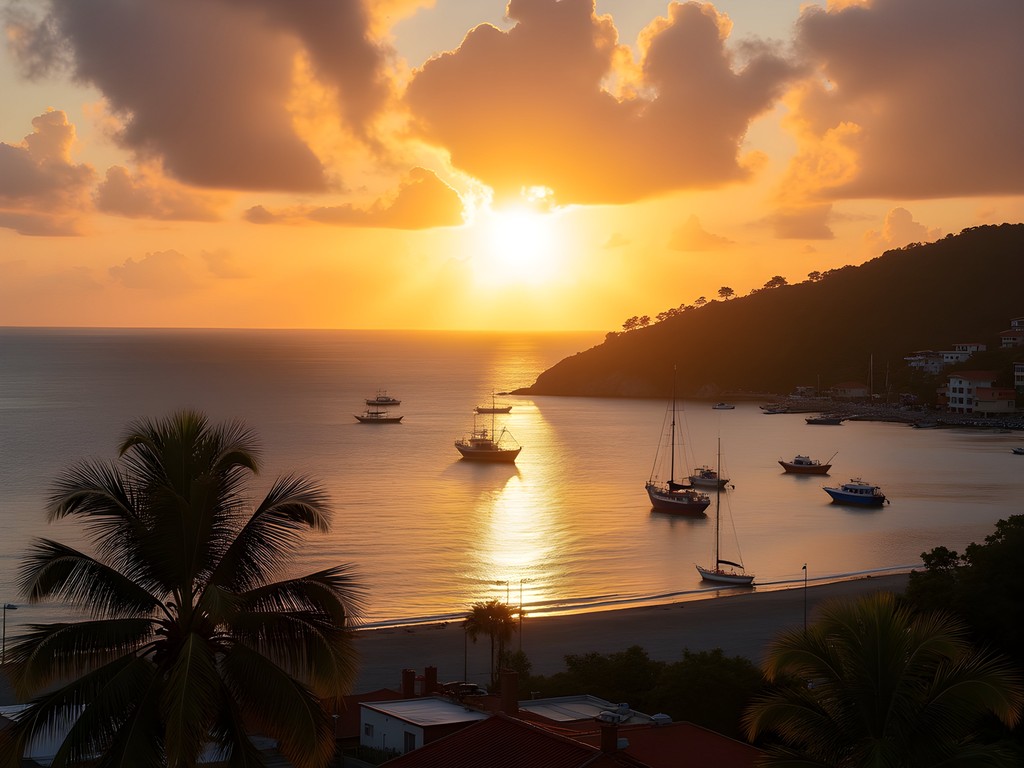
💡 Pro Tips
- Book domestic flights well in advance as seats fill quickly
- Keep a printed copy of your accommodation details and contacts
- Exchange some money at the airport for immediate needs, but most hotels accept USD
The Approach: Milot and the Path to History
The journey to the Citadelle begins in the small town of Milot, about 12 miles south of Cap-Haïtien. On my first visit, I made the rookie mistake of not hiring a guide in advance. Now I work with local guides arranged through my hotel, which ensures a smoother experience and supports the local economy.
Milot itself deserves attention before ascending to the Citadelle. The ruins of Sans-Souci Palace—once called the 'Versailles of the Caribbean'—lie at the foot of the mountain. Built by the same Henri Christophe who commissioned the Citadelle, this palace was devastated by an earthquake in 1842. Walking through its weathered columns and grand staircases, I always take a moment to imagine its former glory and the complex history it represents.
From Milot, you have two options to reach the Citadelle: hiking approximately 7 miles up a steep, sometimes slippery stone path, or taking the more popular route of driving partway up and then transferring to horseback for the final ascent. As someone who values both physical challenges and cultural experiences, I've done both. The horseback option is not only easier but provides income for local guides and handlers.
For the hike, proper footwear is non-negotiable. My hiking boots have proven ideal for the terrain—supportive enough for the steep incline while providing crucial traction on centuries-old stones that become treacherously slippery after rain.
While ascending, the landscape transforms from tropical vegetation to pine forests, offering increasingly spectacular views of the northern plains and distant ocean. The air becomes noticeably cooler and clearer—a welcome relief from Haiti's coastal heat.
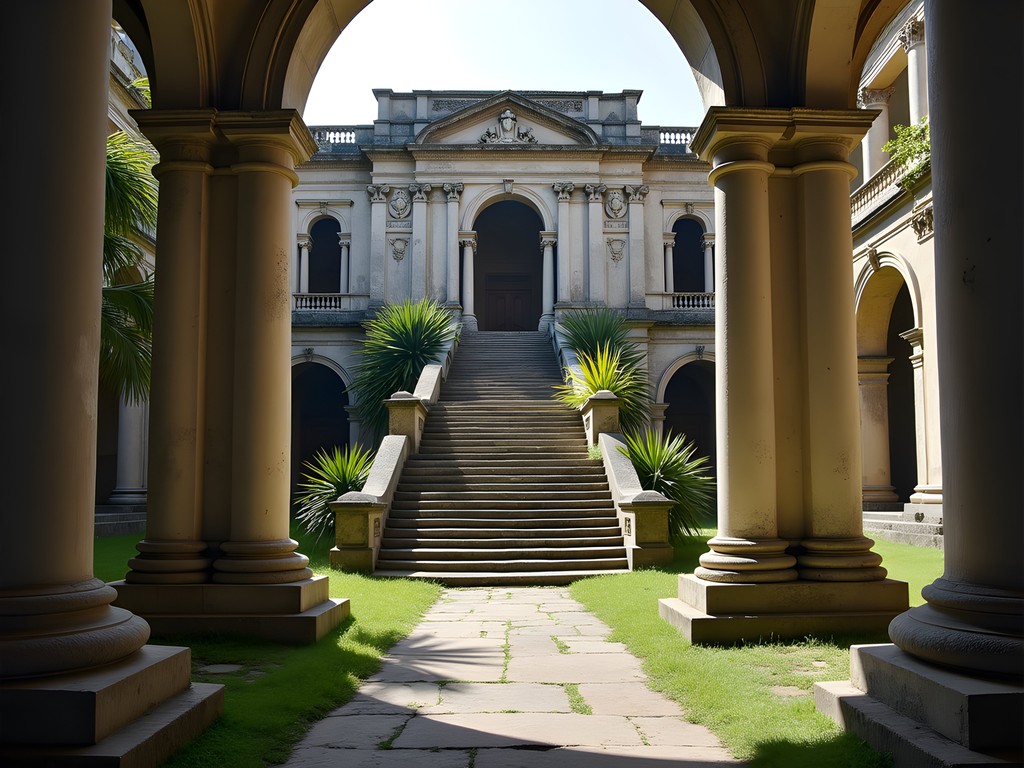
💡 Pro Tips
- Start your journey early in the morning to avoid afternoon heat and rain
- Negotiate guide fees and transportation costs upfront to avoid misunderstandings
- If riding horses, check the condition of your horse and equipment before departing
The Citadelle: Engineering Marvel and Freedom Symbol
Nothing prepares you for the first full view of the Citadelle. Rising from the mountaintop like an extension of the earth itself, this massive structure has walls up to 130 feet high and 10 feet thick. As a paramedic accustomed to assessing structural integrity during rescue operations, I'm still awestruck by what was accomplished here with early 19th-century technology.
The fortress was built to house 5,000 defenders, store enough food and water for a year-long siege, and support 365 cannons. Today, hundreds of cannons remain, many still positioned as they were two centuries ago. The French never returned to test the Citadelle's defenses, but time and nature have—and remarkably, it stands largely intact.
My Mi'kmaq grandmother taught me that sacred places hold energy from those who built them. Walking through the Citadelle's chambers, courtyards, and battlements, I feel the determination of people who had gained freedom against impossible odds and were resolved never to surrender it again. The fortress was built by former slaves who became the architects of their own defense—a powerful narrative that resonates deeply with anyone interested in liberation histories.
The views from the Citadelle's highest points are nothing short of spectacular. On clear days, you can see all the way to Cuba across the Windward Passage. I've spent hours photographing these vistas with my mirrorless camera, though no image truly captures the feeling of standing atop this monument to freedom with the Caribbean stretched before you.
Part of what makes the Citadelle experience so profound is the relative absence of commercialization. Unlike many UNESCO World Heritage Sites that have been developed for mass tourism, the Citadelle retains an authentic atmosphere. Local guides share knowledge passed down through generations, offering perspectives you won't find in any guidebook.


💡 Pro Tips
- Bring at least 2 liters of water per person—there are no vendors at the top
- Ask your guide about the mysterious tomb of King Henri Christophe within the fortress
- Visit the artillery rooms to see cannons from multiple European nations, collected by Haiti's revolutionary leaders
Cultural Context: Understanding Haiti Beyond Headlines
Visiting the Citadelle provides an opportunity to engage with Haiti beyond the limiting narratives often presented in international media. As a paramedic who's worked in crisis situations, I've learned that communities are always more resilient, complex, and vibrant than outside perceptions suggest. This is profoundly true of Haiti.
Haiti was the first Black republic in the world, gaining independence in 1804 after the only successful slave revolution in history. This remarkable achievement came at a tremendous cost—Haiti was forced to pay reparations to France for its 'lost property' (the enslaved people who liberated themselves) until 1947, crippling the nation economically from its birth.
Despite challenges, Haitian culture thrives with rich artistic traditions, particularly in music, painting, and metalwork. Cap-Haïtien's galleries showcase the distinctive style of Haitian art, often characterized by vibrant colors and intricate details. I've found that reading about Haitian history before visiting dramatically enriches the experience. My dog-eared copy of Haiti history book has been an invaluable companion throughout my visits.
The area around Cap-Haïtien also offers beautiful beaches that rival any in the Caribbean. Labadee, just 10 miles from the city, features stunning white sand and clear waters. While part of this beach is leased to cruise ships as a private resort, local beaches nearby offer a more authentic experience.
Food is another highlight of northern Haiti. The region's cuisine blends French, African, and Caribbean influences into dishes like griot (fried pork), diri ak djon djon (black mushroom rice), and pumpkin soup—traditionally eaten on Independence Day to celebrate freedom. Local restaurants in Cap-Haïtien like Lakay and Lakou Lakay serve excellent traditional meals, often accompanied by Prestige beer or Rhum Barbancourt, both Haitian staples produced since the 19th century.

💡 Pro Tips
- Learn basic Haitian Creole phrases—even simple greetings are greatly appreciated
- Support local artists by purchasing directly from galleries rather than souvenir shops
- Try the local coffee—Haiti once produced 50% of the world's coffee and still grows exceptional beans
Practical Considerations: Safety, Ethics, and Preparation
Let's address the elephant in the room: Haiti's reputation for instability often deters visitors. As someone who's traveled extensively throughout the country, I can attest that the reality is more nuanced than headlines suggest. The Cap-Haïtien region has historically been more stable than Port-au-Prince, though conditions can change.
Before any trip to Haiti, I check travel advisories from multiple countries (not just my own), connect with local contacts, and research current conditions. Working with established hotels and guides significantly reduces risks. As an EMT, risk assessment is second nature to me, and I apply the same principles to travel planning.
Ethical considerations are equally important. Haiti has experienced what some scholars call 'disaster tourism' following the 2010 earthquake and subsequent crises. I believe strongly in travel that contributes positively to local economies and respects communities. This means hiring local guides, staying in Haitian-owned accommodations when possible, and approaching photography with sensitivity—always asking permission before taking photos of people.
For health preparations, I recommend consulting a travel medicine specialist at least a month before your trip. Haiti has limited medical facilities, especially outside Port-au-Prince. My travel first aid kit is always with me, supplemented with prescription medications and oral rehydration solutions.
Regarding communications, purchasing a local SIM card upon arrival is advisable if your phone is unlocked. Digicel offers the best coverage in northern Haiti. Internet access is available at most mid-range and upscale hotels but can be inconsistent.
Finally, pack thoughtfully. Haiti is hot year-round, but the mountain regions can be significantly cooler, especially in the evenings. Lightweight, modest clothing that covers shoulders and knees is appropriate for most situations. A small donation of medical supplies to local clinics is always appreciated—as a paramedic, I bring basic items like bandages, antiseptics, and over-the-counter medications that are often in short supply.
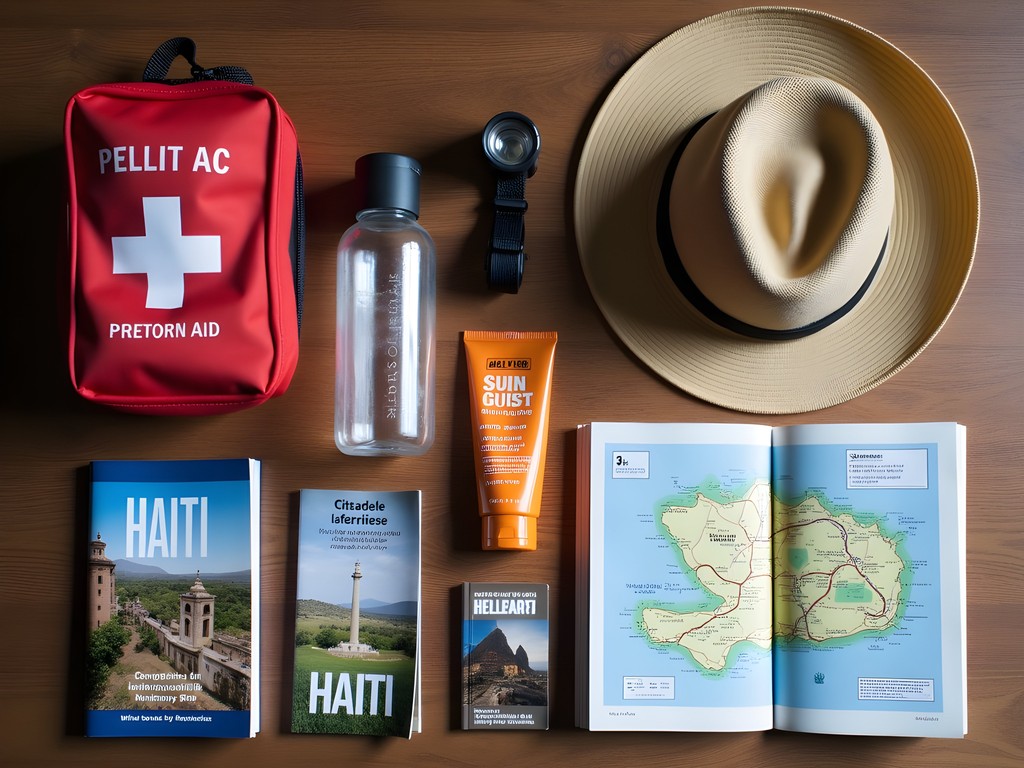
💡 Pro Tips
- Register with your country's embassy or consulate before traveling to Haiti
- Bring cash in small denominations—ATMs are limited and credit cards aren't widely accepted outside major hotels
- Pack a headlamp or flashlight—power outages are common even in better accommodations
Final Thoughts
Standing on the Citadelle's ramparts as the sun sets behind Haiti's northern mountains, I'm reminded that the most meaningful travel experiences often come from the most challenging destinations. This fortress represents not just architectural brilliance but the enduring human spirit—something I've witnessed countless times both in my emergency medical work and my travels to places often misunderstood by outsiders. Haiti offers profound lessons in resilience, creativity, and dignity in the face of obstacles. The journey to the Citadelle Laferrière isn't just about checking off another UNESCO site; it's about connecting with one of history's most remarkable liberation stories while supporting a nation that continues to fight for its rightful place in the global conversation. If you approach Haiti with respect, preparation, and an open heart, the rewards extend far beyond the breathtaking views. As my Mi'kmaq grandmother would say, some places heal you even as you think you're just visiting them—the Citadelle is definitely one of those places.
✨ Key Takeaways
- The Citadelle Laferrière offers a rare combination of historical significance, architectural wonder, and natural beauty
- Proper preparation including local guides, adequate water, and appropriate footwear is essential for a successful visit
- Understanding Haiti's revolutionary history enhances appreciation of the Citadelle and surrounding cultural sites
- Traveling responsibly in Haiti means supporting local businesses and approaching communities with respect
📋 Practical Information
Best Time to Visit
November through March (dry season)
Budget Estimate
$1,000-1,500 for a week, including accommodations, guides, and domestic travel
Recommended Duration
5-7 days (2-3 days in Cap-Haïtien, 1 full day for the Citadelle)
Difficulty Level
Challenging
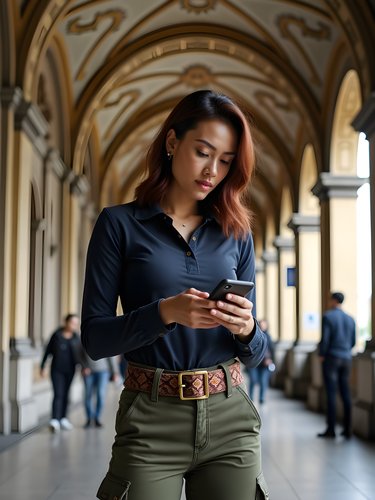
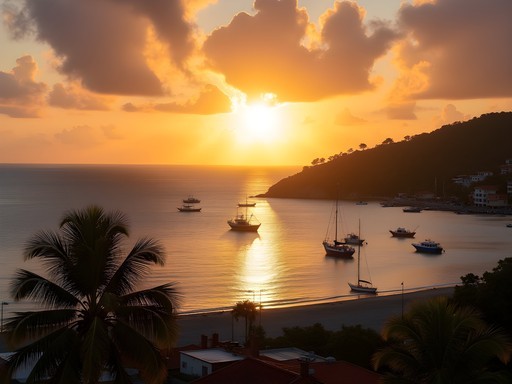

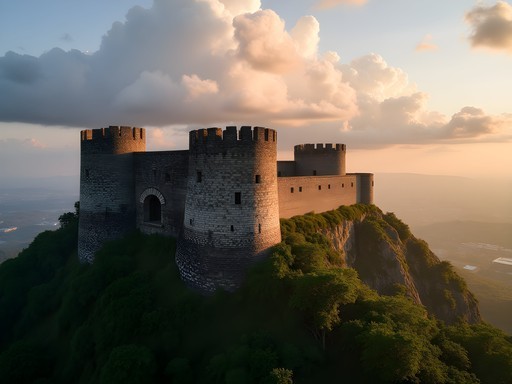
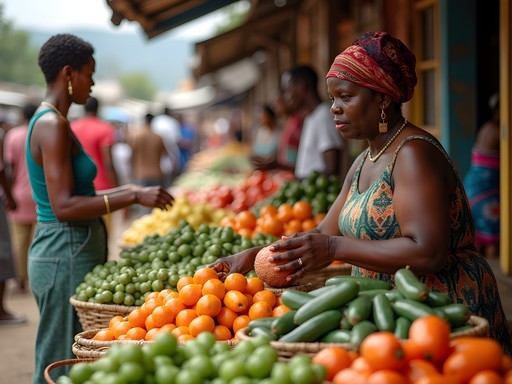











Comments
summermood
Those sunset photos from the ramparts are incredible! Bucket list material right there.
Sage Dixon
Thank you! That sunset was truly magical - worth timing your visit for late afternoon if you can!
Sophia Gomez
I visited the Citadelle last year and it completely changed my perspective on Haiti. The historical significance is incredible - imagine building something this massive by hand in the early 1800s! For anyone planning to visit, I recommend hiring a local guide in Milot who can share the rich history and context. Also, start EARLY in the morning before the heat gets intense. The morning light makes for stunning photos too, especially of those massive cannons and the panoramic views. Haiti has such a complex and fascinating history that isn't taught enough in schools.
springone
This looks amazing! How difficult was the hike up to the Citadelle? I've heard it's pretty steep. Did you take horses or walk the whole way?
Sage Dixon
The hike is definitely steep! I walked the whole way which took about 90 minutes, but most visitors take horses for the steepest part. If you're reasonably fit, walking is doable with plenty of water breaks. The views make it worth every step!
springone
Thanks for the info! I think I'll try walking too, sounds like a good adventure.
wintermate
Just got back from Haiti two weeks ago and the Citadelle blew my mind!! How is this place not more famous?? The scale of it is INSANE when you see it in person. Our guide Marcel was incredible - knew everything about the cannons and military history. Best travel experience I've had in years!
moonqueen
Did you feel like you had enough time there? Planning a trip and wondering if it's doable as a day trip from Cap-Haïtien or if we should stay overnight closer to the site?
wintermate
We did it as a day trip from Cap-Haïtien and it was fine! Left around 8am, back by 4pm with plenty of time at the Citadelle. The road to Milot takes about an hour each way.
Charlotte Watkins
Sage, your post brought back wonderful memories of our family trip to Haiti last year! The Citadelle was the highlight of our journey. For families considering this trip (as we did with our teenagers), I'd recommend staying in Cap-Haïtien at Hôtel du Roi Christophe which arranged our transportation to Milot. We opted for the horses part-way up which was an adventure in itself - my daughter still talks about her guide who sang Haitian folk songs the entire journey. The most magical moment was watching our kids realize they were standing in the largest fortress in the Americas, built by formerly enslaved people who had won their freedom. It connected history lessons to reality in a way classroom learning never could. I'd recommend bringing a compact binoculars to fully appreciate the coastal views from the ramparts. Don't miss Sans-Souci Palace in Milot before heading up to the Citadelle!
freefan
Did you ride horses up or hike the whole way? Thinking about visiting next spring!
Sage Dixon
I hiked up - it's steep but doable if you're in reasonable shape (about 45 minutes). Many people take horses part way. Bring water and wear good shoes either way!
bluelife
How safe did you feel traveling in Haiti? I've always wanted to visit the Citadelle but news reports make me hesitant. Did you hire security or go with a tour group?
Sage Dixon
Great question. I went with a local guide recommended by my guesthouse in Cap-Haïtien. The north is generally more stable than Port-au-Prince. Common sense precautions apply, but tourists visiting the Citadelle follow a well-established route. The locals in Milot were incredibly welcoming.
Charlotte Watkins
I'll add that we felt perfectly safe in northern Haiti with our teenage kids. We arranged everything through our hotel and had zero issues. The Citadelle area sees regular tourism and the locals are protective of visitors. Just stay informed about conditions before traveling.
Adam Nichols
Excellent coverage of the Citadelle, Sage. I visited last year and found the historical context particularly compelling. The fortress represents an extraordinary feat of engineering considering when it was built. My analysis suggests most visitors underestimate both the physical demands of the hike and the historical significance. I'd add that the local guides provide invaluable context about Henri Christophe and the post-revolution period that you won't find in guidebooks. The acoustics inside certain chambers are also fascinating - designed to amplify sound for communication purposes. Worth noting that Cap-Haïtien itself deserves at least 2 days of exploration beyond the Citadelle visit.
moonqueen
Wow, those photos are incredible! I've never even considered Haiti as a travel destination before reading this.
Sage Dixon
Thanks moonqueen! Haiti has so many hidden gems that rarely make it to mainstream travel media. The Citadelle is truly world-class.
coolzone
Been there twice! Pro tip: bring binoculars for the view from the top. On clear days you can see all the way to Cuba!
Venture X
Premium card with 2X miles, $300 travel credit, Priority Pass